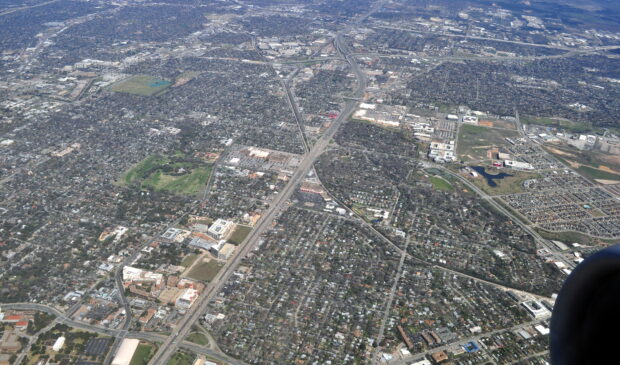Idle lands: Austin joins cities looking to put real estate assets to best use
Tuesday, November 14, 2023 by
Chad Swiatecki By next spring, the city is expected to have a detailed plan for how to turn its underutilized real estate assets into money-producers, in an attempt to add General Fund revenue and counteract state limits on property tax increases.
Austin was recently announced as a participant with three other cities – Evanston, Illinois; Mt. Vernon, New York; and Sugar Land, Texas – in the Putting Assets to Work program organized by the Government Finance Officers Association. The initiative will see city staff work with GFOA to analyze the city’s entire real estate portfolio and identify the parcels or facilities that could be put to better use through redevelopment or other means.
The analysis will take into account the surrounding uses and communities to avoid disruption, with the city’s planning and development offices as well as the Austin Economic Development Corporation likely playing a role in executing potential deals.
The budget for the city’s participation in the program is coming from the Financial Services Department.
“What government budgeting does not look at is really a balance sheet. So private sector budgeting would say, what are our assets? How much are our assets costing us? What benefits do we derive from our assets?” said Ben McAdams, fellow for the GFOA and a former member of the U.S. House of Representatives and former mayor of Salt Lake County, Utah. “The benefits could be simply revenues for the General Fund to support the important work the government’s doing. It could be things like early childhood education or public safety or homeless services or affordable housing.”
Kim Olivares, the city’s deputy chief financial officer, said Austin has recently put idled properties back into use to create the Permitting Development Center and Austin Energy’s headquarters. Recent direction from City Council has identified a handful of parcels – the former city hall building downtown, a warehouse at 411 Chicon Street, One Texas Center and a former fire station on Guadalupe Street – as priorities for reuse.
“We need to be smart at looking at these smaller parcels as well and make sure that we’re utilizing our facilities, our buildings, our property in the most effective way,” she said. “By going through this program and really looking at our properties and our facilities, it creates new opportunities for us to be partnering with the AEDC and the work that they can do. There’s already some properties that Council specifically identified … that they want us to be partnering with AEDC on, and this program amplifies that.”
Olivares said the final parcel map and playbook of possible policy and economic development tools to utilize will help city real estate teams to work efficiently instead of feeling overwhelmed by having too many priorities or objectives.
“It’s no secret the city of Austin has a history of saying we’re going to deal with this or we’re going to deal with that. Instead, let’s try to be far more strategic about how we approach this long-term.”
The PAW program was designed to model successes in major cities such as Hong Kong and Singapore, which funded major public infrastructure projects with the revenue generated from their formerly idled real estate assets. McAdams pointed to a proposal in Hollywood where temporary storage facilities constructed under freeways let the city generate revenue from otherwise unused land.
“The genesis of Putting Assets to Work is to look at government-owned assets that have commercial potential that we could derive value for the community,” he said. “We know that the landscape of local government revenues are changing over time as more people work from home. Commercial real estate is changing as more people shop from home, so retail and sales tax and the nature of sales tax is changing. GFOA believes that governments should be rethinking what our revenue picture is going to look like into the future.”
Photo by Joe Mabel, CC BY 3.0, via Wikimedia Commons.
The Austin Monitor’s work is made possible by donations from the community. Though our reporting covers donors from time to time, we are careful to keep business and editorial efforts separate while maintaining transparency. A complete list of donors is available here, and our code of ethics is explained here.
You're a community leader
And we’re honored you look to us for serious, in-depth news. You know a strong community needs local and dedicated watchdog reporting. We’re here for you and that won’t change. Now will you take the powerful next step and support our nonprofit news organization?






